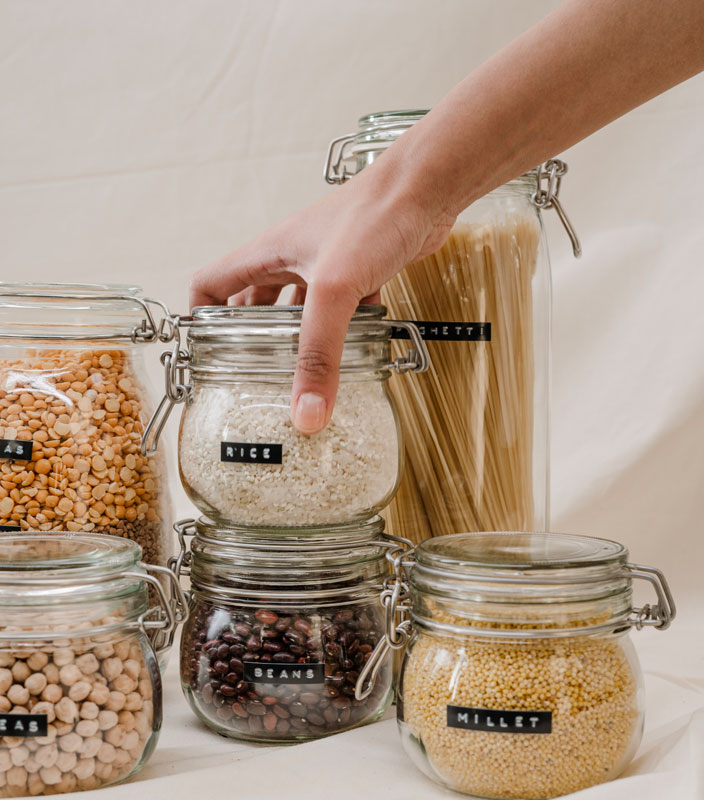Rice - A Grain Above The Rest
Posted by Ola Griffin on Jan 20th 2023
We’re 3 weeks into 2023 so it’s a great time to get started on those New Year’s Resolutions, including:
LONG-TERM FOOD STORAGE
We’re here to help you succeed. Showing you tips, tricks, and sharing our knowledge so you can easily thrive in getting your food storage either started or stocked up.
Grains are so important in our diet, which means we need to have plenty in our food storage. There are lots of grains to choose from: wheat, flour, corn meal, oats, rice, and pasta. These are just the most popular ones, but there are plenty of other grains. Today we’re concentrating on rice.

Rice is one of the most consumed foods in the world and relatively still inexpensive, thus making it easy and one of the least expensive foods to store. Not only does white rice store for decades, but it is packed full of carbohydrates. In times of stress, we need that to feed our bodies energy. But when you combine 1 cup rice and beans you get about 7 grams of complete protein.
Rice is a very versatile food, it can be eaten for breakfast, part of lunch, dinner and even dessert. The recommended year supply to store is estimated to be 50 lbs, per adult. This seems easy to accomplish, because it is! Remember you will need about 300 lbs. of grains in total for the 1 year, but only 50 lbs. of rice. See Food Storage Calculator (thefoodguys.com) for more information. These guidelines can be tweaked to fit dietary needs or allergies.
So, adding rice to your food storage is a great way to get started in food storage. Make a plan and purchase the amount you need for your family. A family of 4 will need 200 lbs. for a year's supply of rice. If you get this off your list this month then you can concentrate on another food item in a few weeks.
There are many ways to store rice for the long-term. PackFreshUSA offers
5-Gallon AND 2-Gallon Mylar bags.
You can store 35 plus pounds of rice quickly and easily in 5-gallon.
Here are the steps:
For the
2-Gallon replace with proper Mylar and bucket.
1. Get 5-gallon bucket.
2. Open 5-gallon Mylar bags.
3. Place Mylar in a bucket.
4. Pour rice into a Mylar bag.
5. Tap the bucket on the ground to settle rice down.
6. Add more rice if needed. Make sure to leave about 4 to 5 inches from the top of the edge of the bucket.
(If you have a Mylar with Zip/seal top feature skip to #8)
7. I like sealing the Mylar about 70% of the way at this point.
8. Add 2000cc oxygen absorber.
9. Burp – remove as much of the extra air as you can.
10. Seal the rest of the Mylar (seal top) and seal the complete top edge.
11. Double check your seal.
12. Fold the Mylar into the bucket.
13. Add a lid.
14. Remember to label your bucket with item and date packed and add to your inventory list.
Storing in Gallons Mylar and smaller:
1. Add rice to your Mylar bag (gallon and under).
2. Seal ½ way
3. Add your oxygen absorber.
4. Burp – remove the extra air.
5. Seal the Mylar.
6. Double check the seal.
7. Label your Mylar (Sharpie pens work great or add labels).
8. Place in the storage of the choice (bucket or bin).
9. Add to your inventory list.
Storing in Mason jar:
1. Start with fully sanitized jars (clean and dry)
2. Add rice – leave about 1 inch from top.
3. Add oxygen absorber.
4. Add a lid.
5. If you have a vacuum seal attachment you can vacuum seal the lid (not necessary).
6. Or if not then simply let the oxygen absorber do its job. It will remove the oxygen and will create enough suction to self-seal the lid.
As you can see this is easy and using our
Mini-sealer to seal your Mylar is one of the easiest ways to seal your Mylar quickly and accurately, whether you use 5-Gallons or smaller Mylar you can easily get your rice stored and one item off your list.
Click here for a printer-friendly version of this post. Keep it on hand when working on your food storage supply.

